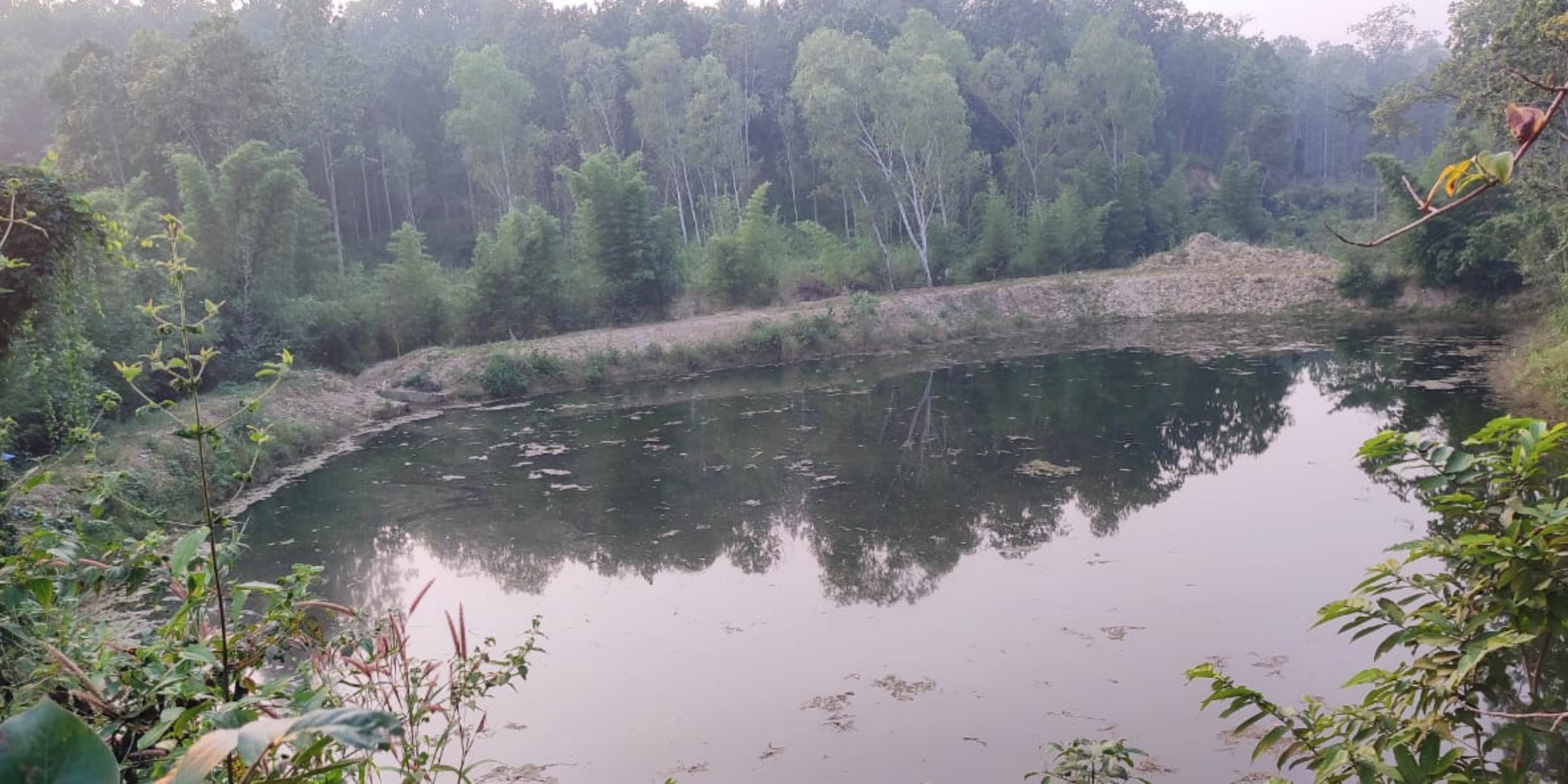
Kul Bahadur Adhikari, a farmer from Rajabas, Bardibas Municipality-3, used to rely on vegetables purchased from traders in the southern parts of the district. When traders didn't visit his village, he often had to buy vegetables like potatoes, onions, and cauliflower from the market. However, this struggle ended two years ago after the conservation pond was built.
“There was a severe water shortage here so we couldn’t grow vegetables,” Adhikari says. “Now, with access to water, we’ve started farming vegetables, and we no longer need to buy them.”
The conservation pond, constructed under the Chure Upliftment Project with support from the Green Climate Fund (GCF), has addressed the irrigation needs of local farmers. According to Shiva Kumar Rana, a resident of Rajabas, 36 households now benefit from irrigation provided by the pond, which spans 13 kaththas of land. “Rainwater is collected in the pond, and farmers pump it to their fields using motors,” Rana explains. “This area had a severe water shortage, but the pond has solved that problem.”
Rammaya Khatri, another resident, mentions that household drinking water wasn’t sufficient for irrigation, even for small vegetable gardens. She has planted crops like cauliflower and cabbage on two 'kattha' of land. “We can’t consume all the vegetables we grow, so we’ll sell the extra,” she says. “Our fields are fertile, but the lack of irrigation made growing winter crops difficult.”
Khatri has installed an agricultural electricity meter provided by the Nepal Electricity Authority’s Bardibas branch, reducing the cost of pumping water from the pond for her crops. She says this system makes it affordable to irrigate both vegetables and grain.
Adhikari adds that the irrigation facility has also improved the yields of mustard, rice, and wheat. “Previously, rice seeds would dry out in the fields due to water shortages, but that problem is now resolved,” he says.
Rana recalls that a small pond initially built with help from various organizations didn’t meet the water demands. However, the Chure Upliftment Project expanded the pond, ensuring it holds enough water even during the dry months of Chaitra and Baisakh. Locals now plan to connect the pond to a water source at the base of the Chure hills using pipes. “By channeling water from the source, we’ll ensure a consistent supply, even in the dry season, providing much-needed relief for farmers,” Rana says.
The conservation pond, located within the Marcaura Community Forest, also aims to prevent wild animals from entering human settlements in search of water. Rana explains that water scarcity in settlements near the Chure forest often forces wild animals to venture into villages. By ensuring adequate water within the forest, the pond helps keep wildlife in their natural habitat and reduces conflicts between humans and animals.
